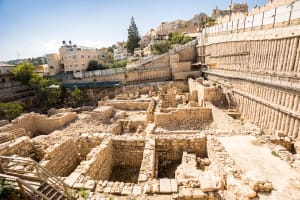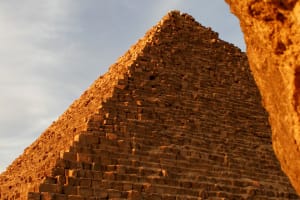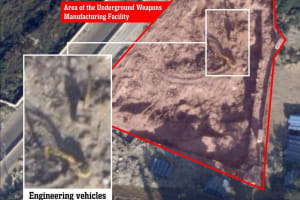Graffiti showing ancient ships found on 1,500-year-old church walls in northern Negev desert
Graffiti likely drawn by Christian pilgrims who traveled by ship to Holy Land

The walls of a 1,500-year-old church adorned with drawings – or graffiti – showing ships were recently uncovered during excavations by the Israel Antiquities Authority (IAA) in the Negev Desert in southern Israel.
This discovery, part of a neighborhood expansion project in the Bedouin town of Rahat, was spearheaded by the Authority for Development and Settlement of the Bedouin community in the Negev, and provides a fascinating glimpse into Israel's post.
These excavations, ongoing for several years, aim to research the area before construction begins for the expanding Israeli Bedouin community.
The graffiti was likely left by Christian pilgrims who traveled by ship to the port of Gaza. In this case, they came most probably from across the Roman Empire during the 5th and 6th centuries A.D. Their first inland stop was this church in modern-day Rahat before they continued to other sacred sites, according to Excavation Directors Oren Shmueli, Dr. Elena Kogan-Zehavi, and Dr. Noé David Michael of the IAA, along with Prof. Deborah Cvikel from the University of Haifa’s Department of Maritime Civilizations.

“The excavated site tells the story of settlement in the Northern Negev at the end of the Byzantine period and at the beginning of the Early Islamic period. Pilgrims visited the church and left their personal mark in the form of ship drawings on its walls. The ship is indeed an old Christian symbol, but in this case – apparently, it is a true graphical depiction of real ships in which the pilgrims traveled to the Holy Land,” the archaeologists noted.
It is notable that not only ships, but also anchors and fish, are among the earliest Christian symbols. In this context, the ship may symbolize the long pilgrimage journey itself.
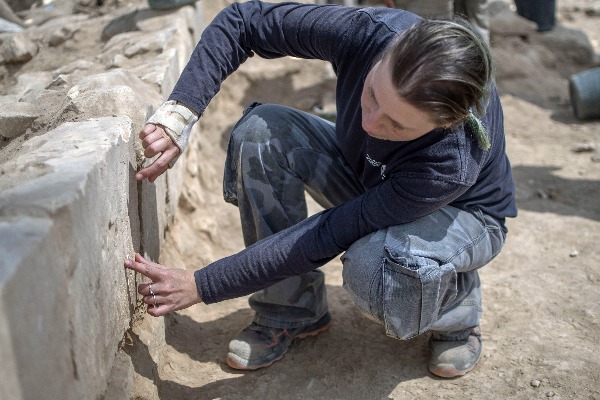
The ancient church site is strategically located near an old Roman road connecting the Mediterranean port of Gaza – one of the most important regional trade ports in antiquity – with the area of Beersheva, which is the capital city of the Negev region today.
“The pilgrims began their pilgrimage following Roman roads leading to sites sacred to Christendom, such as Jerusalem, Bethlehem, the monasteries in the Negev Hills, and in the Sinai," the archaeologists explained.
"It is reasonable that their first stop after alighting from the ships in Gaza port was this very church revealed in our excavations south of Rahat. This site lies only a half-day’s walk from the port.”
The northern Negev region not only contained pilgrim routes but was densely populated during the Byzantine period. In fact, except for the modern era, this was the only period when the entire Holy Land was extensively settled, even reaching into previously remote areas.
Farmers of this time developed expertise in irrigating arid and remote regions by collecting scarce rainwater from large catchment areas. Many scholars believe that the population of the Holy Land during this period exceeded one million inhabitants. This local population was supplemented by numerous Christian pilgrims visiting the land annually, as well as Roman Christian clergy who, for the first time in history (aside from perhaps the Jewish Essenes), sought to develop monastic life in the remote areas of the Holy Land.
Prof. Cvikel explained that among the ship drawings, one is particularly notable for its special line work. Although the drawing is simple, the slightly pointed bow and oars on either side suggest an aerial view of the vessel. The lines beneath it might represent the movement of oars through the water. This indicates the artist's attempt at a three-dimensional depiction. Similar ship and cross drawings by Christian pilgrims have also been found in Jerusalem’s Church of the Holy Sepulchre, already a major pilgrimage site for Christians at this period.
Another drawing features a two-masted ship. The main mast has no sail, but the foremast – angled toward the bow – bears a sail known as an artemon. The precision in these details reflects the artist’s knowledge of maritime life.
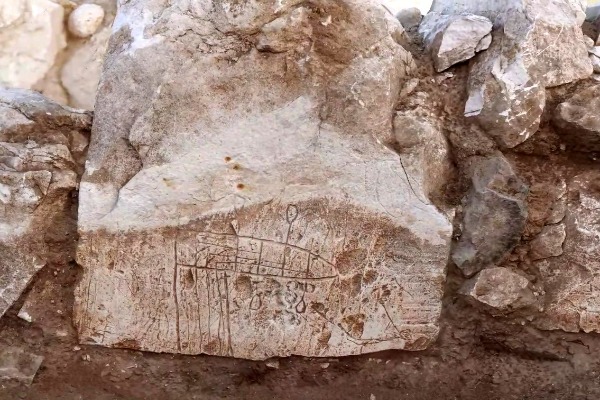
Interestingly, the graffiti was discovered on a stone that had been reused upside-down, implying either the stone was placed afterward without knowledge of the drawings or it was deemed insignificant by the builder.
Eli Escusido, director of IAA, remarked: “This surprising and intriguing find of ship drawings in a Northern Negev Byzantine-period church opens a window for us to the world of Christian pilgrims visiting the Holy Land 1,500 years ago, and provides first-hand evidence about the ships they traveled in and the maritime world of that time. I invite all lovers of archaeology to the Rahat Conference in early June, where many finds found in IAA excavations in the city will be on view for the public.”

This newly discovered Byzantine-period church, located south of Rahat, will be publicly showcased for the first time at the Rahat Conference on June 6. The event, held at the Municipal Cultural Hall in Rahat, will highlight the rich history unearthed by these excavations.
This captivating discovery not only enriches our understanding of early Christian pilgrimage routes and maritime history but also emphasizes the significant role of archaeological efforts in uncovering and preserving Israel's shared past. The ship drawings on the church walls stand as a testament to the enduring connection between the people of the ancient world and their modes of travel, offering insights into their journeys and the cultural exchanges that shaped the region’s history.

The All Israel News Staff is a team of journalists in Israel.
You might also like to read this:



